It is impossible to imagine Madrid without thinking of Calle Alcalá. It is one of the busiest and most historic avenues of the city. As it is one of the oldest, it has grown at the same pace as the city. Today, we look into its past and see how it has developed throughout the years. We invite you to take A Walk in the Past and we will talk about Calle Alcalá. Some weeks ago, we wrote about Calle Atocha.
A ROAD IN THE PAST AND AN EMBLEMATIC AVENUE IN THE PRESENT
The origin of Calle Alcalá goes back to the XV century when Madrid was made up of Cañadas Reales. It was Madrid de los Austrias and the city was starting to grow. At that time, some streets next to Puerta del Sol, were constructed.
At the beginning, Calle Alcalá was known as Los Olivares and it was only a road leading to Alcalá de Henares, hence its current name.
Calle Alcalá starts in Puerta del Sol which is the very centre of Madrid, and it is more than 10 kms. long. As time went by, it was lined with mansions, palaces, banks, convents and even a bullring which no longer exists.
XX CENTURY
At the end of the XIX century and the beginning of the XX, many cafés were set up in Calle Alcalá. Important literary gatherings were held there and literary and bohemian figures attended.
The part of Calle Alcalá between Puerta del Sol and Plaza de la Independencia was already a significant financial area with many banks and historic buildings.
At the beginning of the XX century, Calle Alcalá was expanded beyond Puerta de Alcalá and the Palacio de Comunicaciones was built as well as Gran Vía. All these changes led to the demolition of various streets and buildings. In Calle Alcalá we have Puerta de Alcalá and the Cibeles fountain. Both are essential monuments in Madrid.
DID YOU KNOW THAT…?
At the beginning, Calle Alcalá was known as Los Olivares because it crossed an olive grove. This olive grove was a hiding place for bandits and villains, so queen Isabel la Católica decided to have it cut down. From then on, the street started to be called Calle Alcalá.
Old pictures: Madrid Antiguo
Modern Picture: Federico Jordá



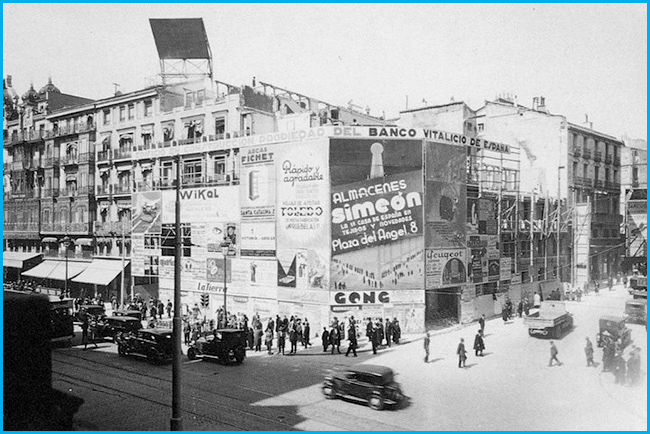
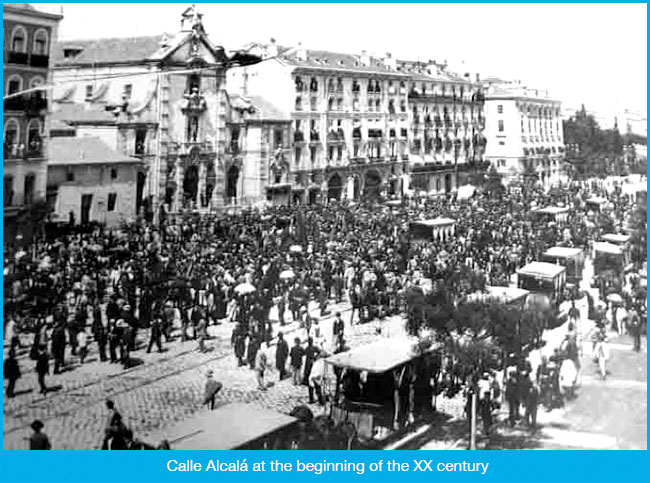
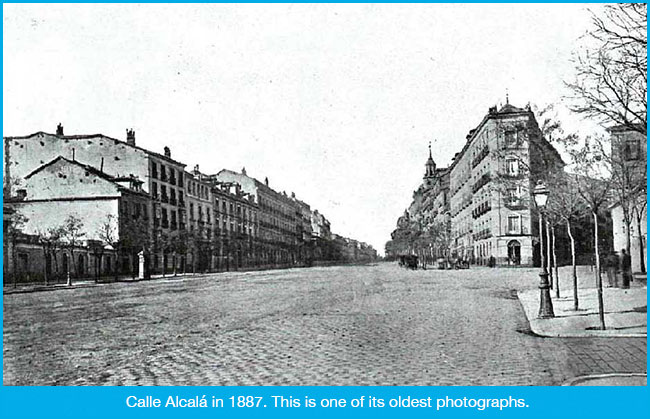
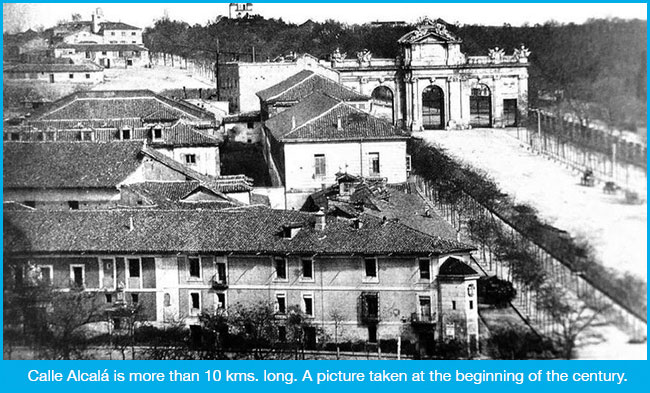
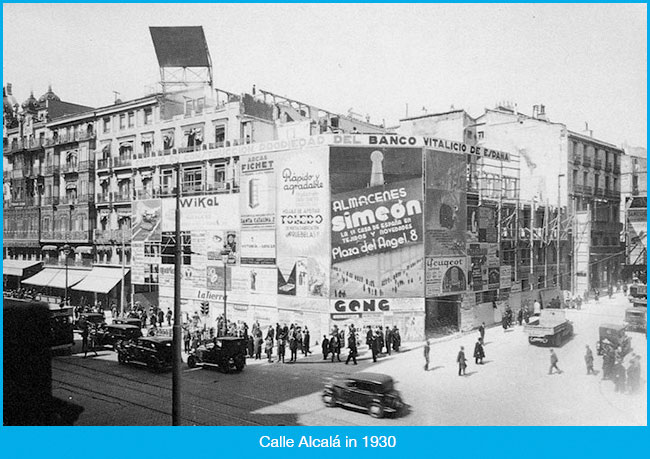
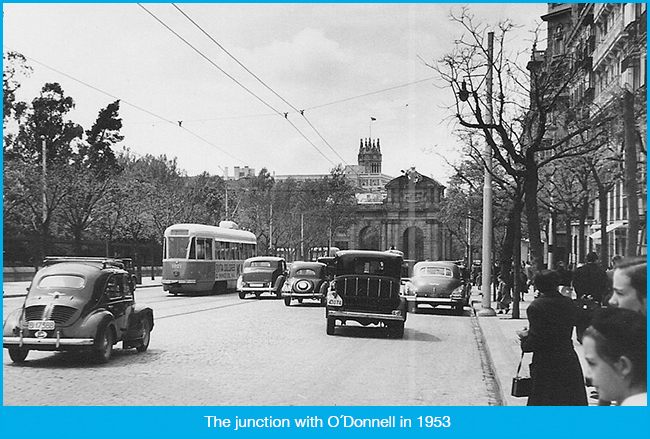
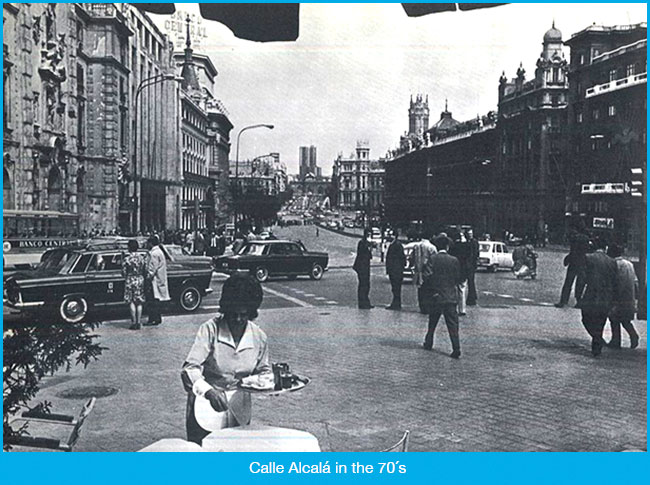
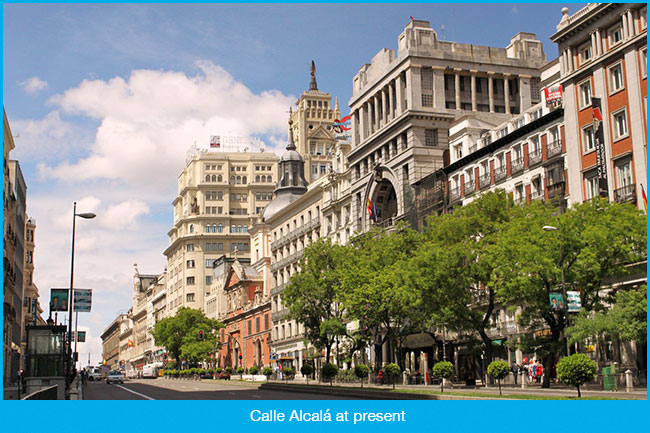
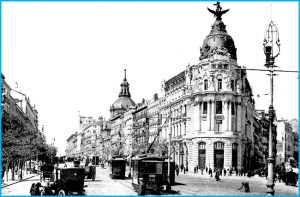
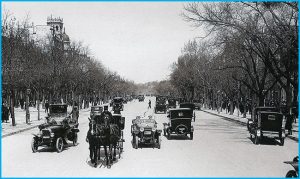
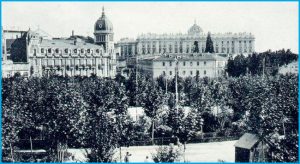
 Spanish
Spanish English
English